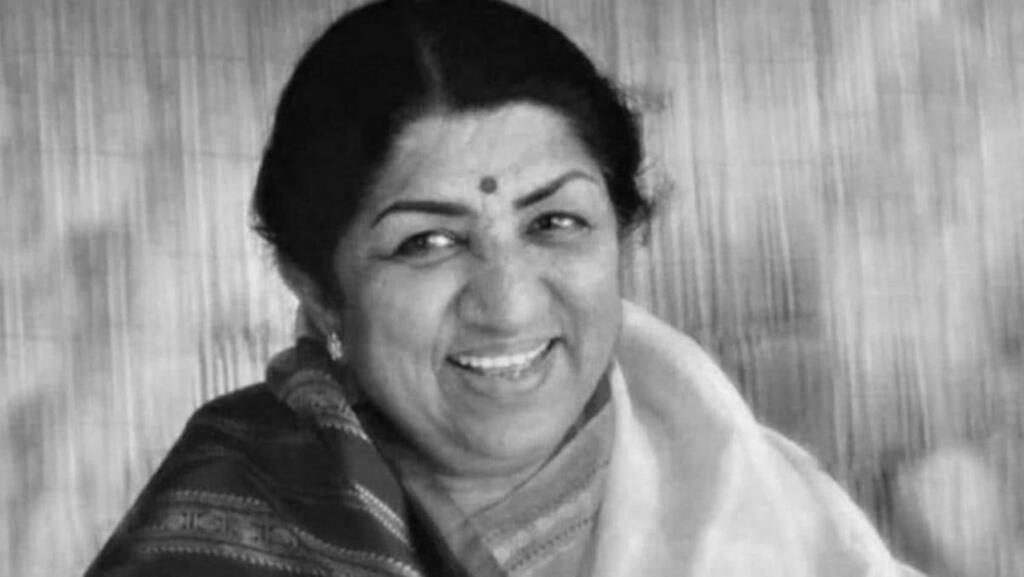Melody queen Lata Mangeshkar is no longer with us. The 92-year legend passed away on Sunday and the entire nation is in shock. By this time, you would have already read how Lata Mangeshkar had sung 50,000 songs in 14 different languages, setting a Guinness World Record.
Also, you already know that she remains one of the single-largest influencers on the Indian film industry having given her voice to Bollywood actresses of different eras from Madhubala to Kajol. But let’s know her more closely. Lata Mangeshkar wasn’t just an extraordinary singer, but also a true patriot and nationalist. She was someone who stuck to her Indic values despite the entertainment industry going through several phases of deracination. We find several instances from her life that shows her love for her nation and culture.
When Lata Mangeshkar revealed her family ties with Veer Savarkar
Amongst all her songs, Lata Mangeshkar is probably best known for ‘Aye Mere Watan Ke Logo’, a patriotic song written in Hindi by Kavi Pradeep, composed by C. Ramchandra, and sung by singer Lata Mangeshkar to commemorate Indian soldiers who died during the Sino-Indian War in 1962. It was first sung by the legendary artist on 26 January 1963 at the National Stadium in New Delhi.
Read more: Full-time Historian and Part-time Musician Vishal Dadlani makes a gigantic fool of himself
For Lata Mangeshkar, nationalism however wasn’t a commercial programme. She didn’t use it for hogging the limelight as an artist. She internalised it. In fact, she wore patriotism on her sleeves even if it meant upsetting some influential sections of the society.
In September 2019, she even tweeted, “Veer Savarkar ji aur hamare pariwar ke bahut ghanisht sambandh the,isiliye unhone mere pita ji ki natak company ke liye natak “Sanyasta Khadag“ likha tha. Is natak ka pehla prayog 18th Sep 1931 ko hua tha, is natak mein se ek geet bahut lokpriya hua“(Veer Savarkar and my family has deep connections, that’s why he wrote a play “Sanyasta Khadag” for my father’s theatre company, the platy first launched on 18th Sep 1931, the song (tagged in the tweet) featured in the play is very popular.)”
Veer Savarkar ji aur hamare pariwar ke bahut ghanisht sambandh the,isiliye unhone mere pita ji ki natak company ke liye natak “ Sanyasta Khadag “ likha tha. Is natak ka pehla prayog 18th Sep 1931 ko hua tha,is natak mein se ek geet bahut lokpriya hua. https://t.co/RMzBUc69SB
— Lata Mangeshkar (@mangeshkarlata) September 19, 2019
There is no need to emphasise the kind of trolls that you have to face if you admire Veer Savarkar or acknowledge family relations with the freedom fighter. But this was Lata Mangeshkar. She came from a family of singers with strong cultural values and she wasn’t the one to give them up.
Lata Mangeshkar- a great patron of Indian cricket
Ahead of India’s first ODI against West Indies, BCCI tweeted, “The Indian Cricket Team is wearing black armbands today to pay their respects to Bharat Ratna Lata Mangeshkar ji who left for her heavenly abode on Sunday morning. The queen of melody, Lata didi loved cricket, always supported the game and backed Team India.”
The Indian Cricket Team is wearing black armbands today to pay their respects to Bharat Ratna Lata Mangeshkar ji who left for her heavenly abode on Sunday morning. The queen of melody, Lata didi loved cricket, always supported the game and backed Team India. pic.twitter.com/NRTyeKZUDc
— BCCI (@BCCI) February 6, 2022
Now, this wasn’t merely symbolic. Lata Mangeshkar has been one of the most generous supporters of the Indian cricket fraternity, which was a corollary of her wish to see India do well at the international level.
In 1983, the legendary singer had even performed at a fundraising concert for the 1983 World Cup winning team, without charging even one rupee for it. The concert was, of course, successful given Lata Mangeshkar’s incredible popularity. ₹20 lakh were raised at that time, which was enough for every player to receive ₹one lakh.
When she recorded a bhajan for LK Advani’s rath yatra
After the historic bhumi pujan was performed by PM Narendra Modi at the Ram Mandir site in Ayodhya, the legendary singer had tweeted, “The dreams of several kings, several generations and the devotees of Lord Ram from across the world, which they have been nurturing over the ages, is being fulfilled today. After years of Vanvaas, Lord Shri Ram’s temple is being rebuilt in Ayodhya today, the foundation stone is being laid.”
In fact, veteran politician LK Advani said, “Lata ji has been my all time favourite among popular singers and I feel fortunate to have shared a long association with her. I recall the time when she recorded a beautiful Shri Ram Bhajan and sent it to me when I was about to undertake my Ram Rath Yatra from Somnath to Ayodhya. That memorable song–“Ram Naam Mein Jaadu Aisa, Ram Naam Man Bhaaye, Man Ki Ayodhya tab tak sooni, jab tak Ram Na aaye…”became the signature tune of my Yatra.”.”
Lata Mangeshkar remained an epitome of grace throughout her life. Unlike many singers of the present era, she never turned into a performer. Lata Mangeshkar has passed away, but she continues to represent the great Indian culture of music and singing in the way she sung and the way she carried herself in public life.
